It’s no surprise that I (and by I, I mean Courtney and myself) love Lord of the Rings. We read the books, saw the movies, and even themed our wedding around the novels. She even got me a customized dice box engraved in elvish for our anniversary.

Funny enough, we never tried out the various Lord of the Rings RPGs that have been in the background of many gaming stores over the years. However, Court surprised me when she backed the Kickstarter for the One Ring 2nd Edition by Free League Publishing. Since I’ve been on a kick to explore new and different RPG’s, this seemed like a perfect fit for our next gaming discovery. The Kickstarter ended March 4th of this year, but the alpha rules just arrived in our mailbox. I’m pretty hyped after reading through the rulebook, and I felt it was the perfect opportunity to share my One Ring 2nd edition impressions!
As a brief note — I have zero familiarity with the 1st edition of the One Ring RPG. This One Ring 2nd edition impressions piece is more about previewing interesting or unusual rules than comparing it to the older version.
There and back again: The One Ring 2nd Edition Impressions
A (brief) history of Lord of the Rings TTRPG’s
The One Ring RPG is the latest in a long line of licensed LOTR gaming systems beginning with Middle-earth Role Playing back in the 1980’s. Middle-earth Role Playing (MERP) ran from first publication in 1982 and saw new supplements and editions regularly before the publishers lost the license in 1999. In a 1996 readers poll taken by Arcane magazine to determine the 50 most popular roleplaying games of all time, Middle-earth Role Playing was ranked 11th.
MERP begat the Lord of the Rings Roleplaying Game, published by Decipher inc in 2002. This system saw a drastic change in rules and drew heavy inspiration from the Lord of the Rings films that had recently been released. While not nearly as popular as the prior game, the system only saw a handful of supplemental releases. The license changed ownership yet again to Cubicle 7, who released the third ttrpg The One Ring in 2011.
The One Ring was a very popular version, winning a number of Ennie awards through the years. The main draw of this system is that it adds in the hardship of travelling across the wilderness rather than regulating it to thirty seconds of DM monologuing. New rules for the cross-country journeys involve mechanisms for attrition, making the journey itself a challenge rather than glossing over to get to the action faster. Ultimately, Cubicle 7 announced a 2nd edition, but dropped the licensing rights in 2019. Free League Publishing picked up the rights, and with a successful kickstarter are bringing 2nd edition to tabletops across the globe!
Gameplay breakdown
The One Ring 2nd Edition is set between the events of The Hobbit and Fellowship of the Ring. Players take on the rolls of the good folk of Middle-Earth, including Men, Dwarves, Elves, and Hobbits, while the Loremaster controls NPCs & the forces of evil. Game sessions are separated into two overarching phases: the Adventuring phase and the Fellowship phase. The Adventuring phase is the “traditional gameplay” section, with combat, exploration, and roleplaying dictated by the Loremaster, while the Fellowship phase allows players to narrate what their characters do during downtime between adventurers, like relaxing or performing various undertakings.
Let’s talk about dice next! The One Ring uses d12’s and d6’s to determine rolls. When faced with a challenge, players roll a d12 (known as a Feat Die), with the face number determining success or failure. Players can also add a number of d6’s (known as Success Die) equal to their proficiency level in the skill check, further aiding in the chance at success. For example, Filigree Took wants to make a Stealth check to sneak across a busy tavern without being spotted. Being small and dexterous, Filigree has a 3 in stealth, and the Target Number (TN) is 16, so she rolls one d12 and three d6s. She rolls an 18 across the four dice, and manages to join her companions already within the backroom unnoticed. The dice made specifically for the game also include special runes on certain die faces that determine critical successes, crit failures, and additional levels of success which may affect the outcome of a challenge.
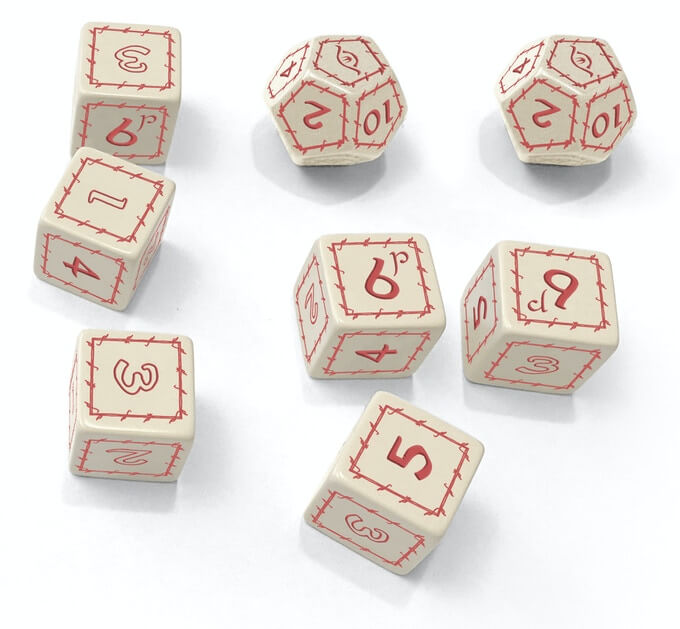
Lord of the Rings Math Rocks!
Image courtesy of the Free League Kickstarter
Character creation
Let’s be real: we can’t all be the super-cool elf archer prince from Mirkwood (but we can certainly try). Players can choose from six heroic cultures to start their character. The current options are:
- Bardings — Wealthy and hale northmen who lived near the Misty mountains.
- Dwarves of Durin’s folk — ancient and proud dwarves who are natural sprinters, and very dangerous over short distances.
- Elves of Lindon — Elves of Middle-earth who display a wisdom beyond the reach of Men.
- Hobbits of the Shire — A small and merry folk fond of traditions and respectable ways.
- Men of Bree — Sturdy yet modest descendants of ancient people that live among Bree-hill.
- Rangers of the North — Also known as descendants of the Dunedain, these tall and lordly people prowl the lands to keep them safe from evil things.
Depending on the culture chosen, players then choose their attributes from a chart and copy learned skills down on their sheet. Once stats are determined, players move on to pick one of six Callings, which act like classes in other games. Callings provide additional skill bonuses, distinctive features that add additional abilities, as well as determining their “shadow path”, or a fate that may befall an adventurer should they fail to resist evil influences.
On first read, this character creation process seemed limited, especially compared to other game systems I’m more familiar with that require tons of die rolls to carve a character out of raw imagination. The book even states that there are 36 total combinations of cultures and callings available, but there’s so much more to it than that. There’s tons of customization available with war gear options, “Virtues” that grant special stat or skill bonuses, distinctive features, and even stat-derived attributes like Endurance, Load, and Hope! You could have an entire party of hobbit burglars and each one could be a completely different character stat-wise. I think the simplicity of the character creation is a boon, and encourages creativity to make unique characters based on other factors than just “human fighter” or “elf ranger”.
The Journey phase
So you’ve got your adventuring company together, a trusty walking stick at your side and a well-stocked pony bringing up the rear. Where do you go from here? As long as the party has a destination in mind, they can use an in-depth travelling system to get from the Shire to Mordor. Each party member starts by picking a traveling role, such as Guide, Hunter, Look-out and more. As characters select roles, they choose a journey path towards their desired destination, represented by a number of hexes on a map (the rulebook clarifies that a map will be included in the final product). Next, the party Guide makes Marching tests that determine when and where Events occur along the path. These can range from minor mishaps that cause fatigue to short cuts that reduce travel time or even “Terrible Misfortunes” that can even cause great harm to the party! Rolling well can push back the occurrences of these events (which skew towards bad encounters more so than good ones) while rolling bad may increase the number of events a group may encounter while travelling. There’s also plenty of opportunity for Loremasters to include or substitute combat encounters as well if the party is travelling through particularly dangerous territory. It’s a little awkward on the page mechanics-wise, but I think once people get the hang of the Journey phase it can really improve an oft-ignored part of the roleplaying experience.
Fun thing I discovered: there’s an interactive map of Middle-earth available online that includes a ton of viewing options, including the ability to click on known locations for a link to the corresponding wiki page. I know I’ll use the hell out of it once we start running One Ring games, and this feels like the best place to share it!
Combat
Next up in my One Ring 2nd Edition Impressions is the time-honored tradition of beating monsters to a pulp! Before we get started though, I want to preface that the majority of my tabletop experience is with D&D, and I’m familiar with the flow of combat based around that game. Combat in One Ring makes significant changes to traditional fantasy battle actions by streamlining and outright eliminating fighting aspects particularly engrained in modern RPGs. Features like die-determined Initiative are gone, as all players take their turns based on “Battle Stances” choses at the start of each round, with enemies attacking afterwards.
Another difference is that movement distance is abstract, instead of based on player stats. Once combat starts, enemies charge at the heroes (or vise versa) and “pair off” against available opponents. Movement on a map isn’t required based on the rules of combat, as characters spend their action to move across the battlefield to another opponent. To me, it really emphasizes the “close and dirty” style of fighting seen in the first movie, like in Moria or the Uruk-hai encounter in the woods.
However, combat overall reads like a heavily mathematical process, like you’re just rolling to beat the numbers more than engaging an actualized foe. To be fair, Loremasters would normally add flavor and complexity to fights to help with immersion. Still, the mechanics as presented don’t seem to encourage players to be creative with their actions, but instead to simply roll dice until either the characters or their enemies are dead. There’s plenty of strategy involved to determine which actions or battle stances would be best in a given situation, but it feels more like a battle simulation rather than a roleplaying experience. My hope is that this is addressed in the final product, or at least reworded to encourage more creativity of choice. Don’t get me wrong — I’m hyped to make up my own dynamic encounters, but I feel the rules as written limit flexibility for both players and game masters.
One design choice I do enjoy is how damage works in One Ring. Rather than an arbitrary amount of hit points to determine how much damage one can take, characters instead have an Endurance rating. Endurance ties directly into how much punishment one can take before passing out, and can be affected by things like fatigue and even how much gear you’re carrying. Damage dealt in combat affects the target’s endurance, but if a 10 or a critical hit is scored on the Feat die, then characters potentially score a wound. Wounded characters have a harder time doing anything, and require days to heal, if they aren’t slain first. I like the level of lethality to this system, as it makes even random encounters with minor foes potentially deadly. Like poor Boromir.
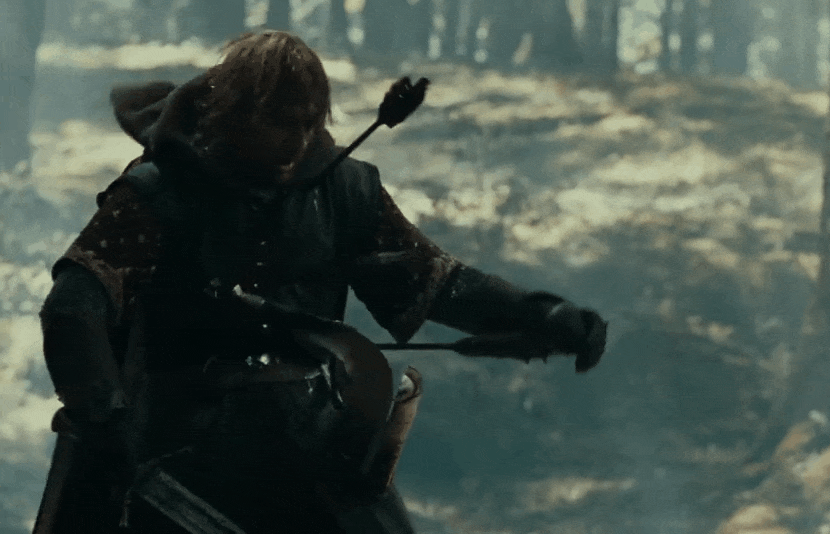
Stray thoughts
There’s a whole lot I haven’t gotten to, but I wanted to share a few random musings about other parts of the book:
- I love that there’s a stat for Misery and Weariness in this game! It fills me with joy for some reason.
- Magic items — This is another big section I glossed over, but there’s tons of info on how to make unique enchanted gear that fits in with the Tolkien fantasy aesthetic.
- Successors — You can straight up raise an heir using treasure found during journeys! This acts like a built-in 2nd character if your first one retires (or dies), and if you exceed a certain threshold of invested treasure, they start with higher stats than a base character and can even come equipped with heirloom magic items!
- Speaking of heirloom items, the rules have a specific call-out box recommending that fallen allies be buried with their equipment, and not scavenged by other members of the party. It’s small touches like that which reinforce the feeling of a Lord of the Rings adventure.
- There’s one unlisted chapter in the table of contents, and I’m wondering if we’ll get rules for magic beyond items.
- There’s currently five categories of Adversaries, as the game calls them: Evil men, Orcs, Trolls, Undead, and Wolves of the Wild. I really hope that they add spiders to that list, since I love giant sentient spiders as encounters!

Freaky Rankin-Bass Hobbit Spiders!
- As mentioned earlier, there’s Shadow paths for each calling, and this neat feature allows for a mechanical progression when characters fail to resist the influence of evil. Imagine Denethor’s fixation towards Boromir, or Gollum’s ring obsession, and you can see how characters can fall into dark compulsions.
- The current art design and presentation is top notch and pretty easy to read! I also love the “sketchy” art used throughout.
- Look at this sweet, sweet leather-bound collector’s edition!
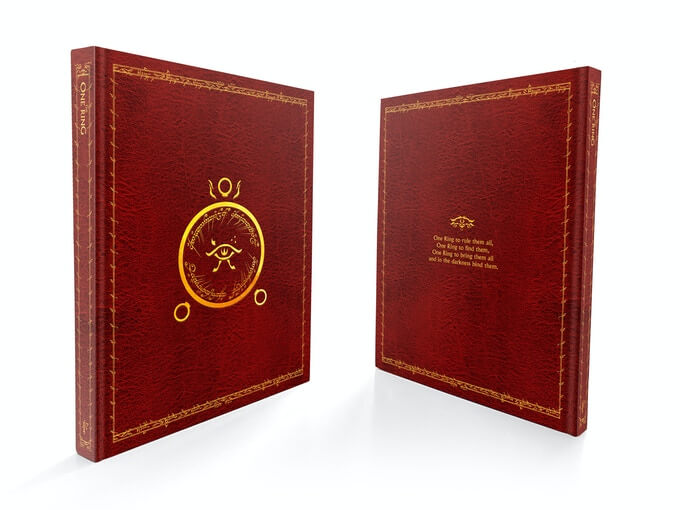
Image courtesy of the Free League Kickstarter
Wrap up
I was definitely impressed with the alpha rules by Free League Publishing, and I can’t wait to see what else will be added and fixed before the final product comes out.
I hope you enjoyed our impressions piece of the One Ring 2nd Ed! Let us know if you agree or disagree with the post on Twitter, Facebook, Instagram, or Discord! If you’d like access to more maps and content, including downloadable PDFs of our adventures, check out our Patreon. We’re able to do what we do because of all our amazing Patrons!
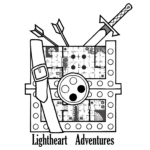
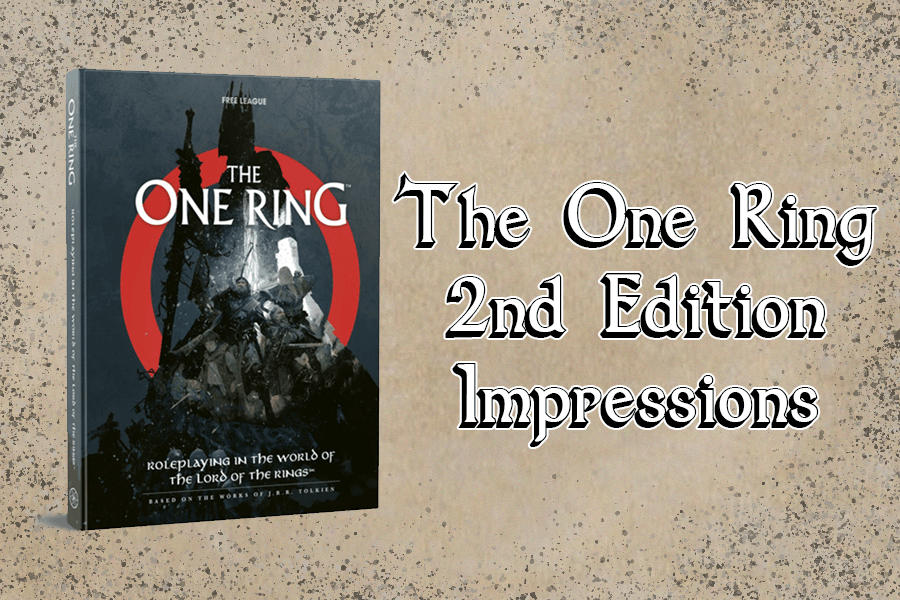
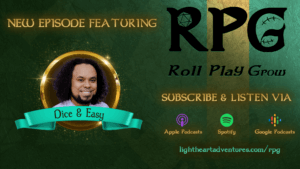
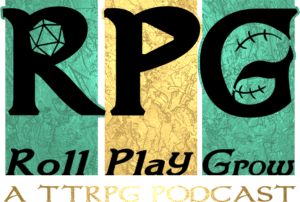
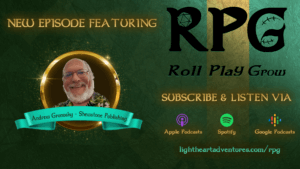
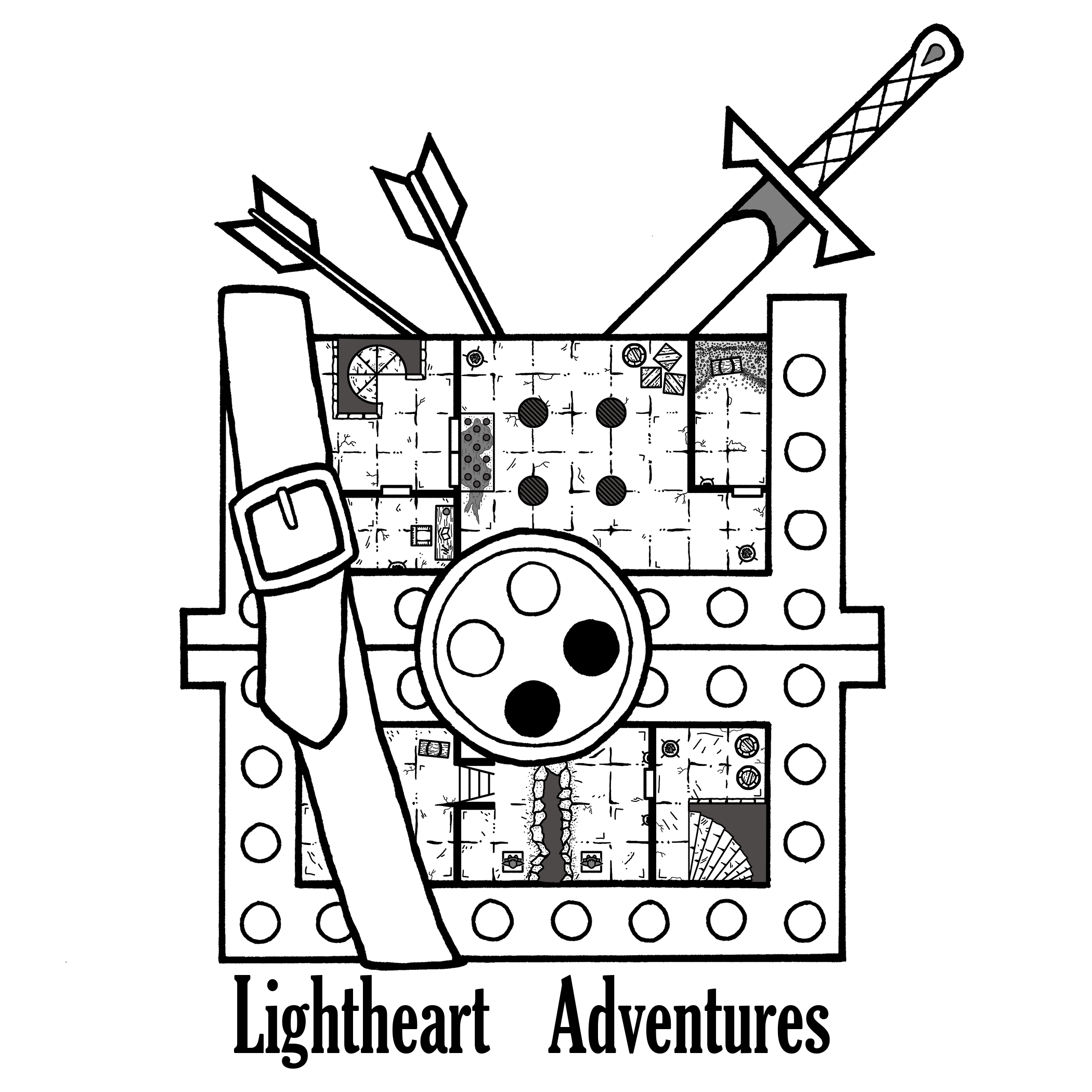


Excellent review. I’m interested in getting it and I’ll make sure to check in the combat rules to see if its evolved to more than mechanics